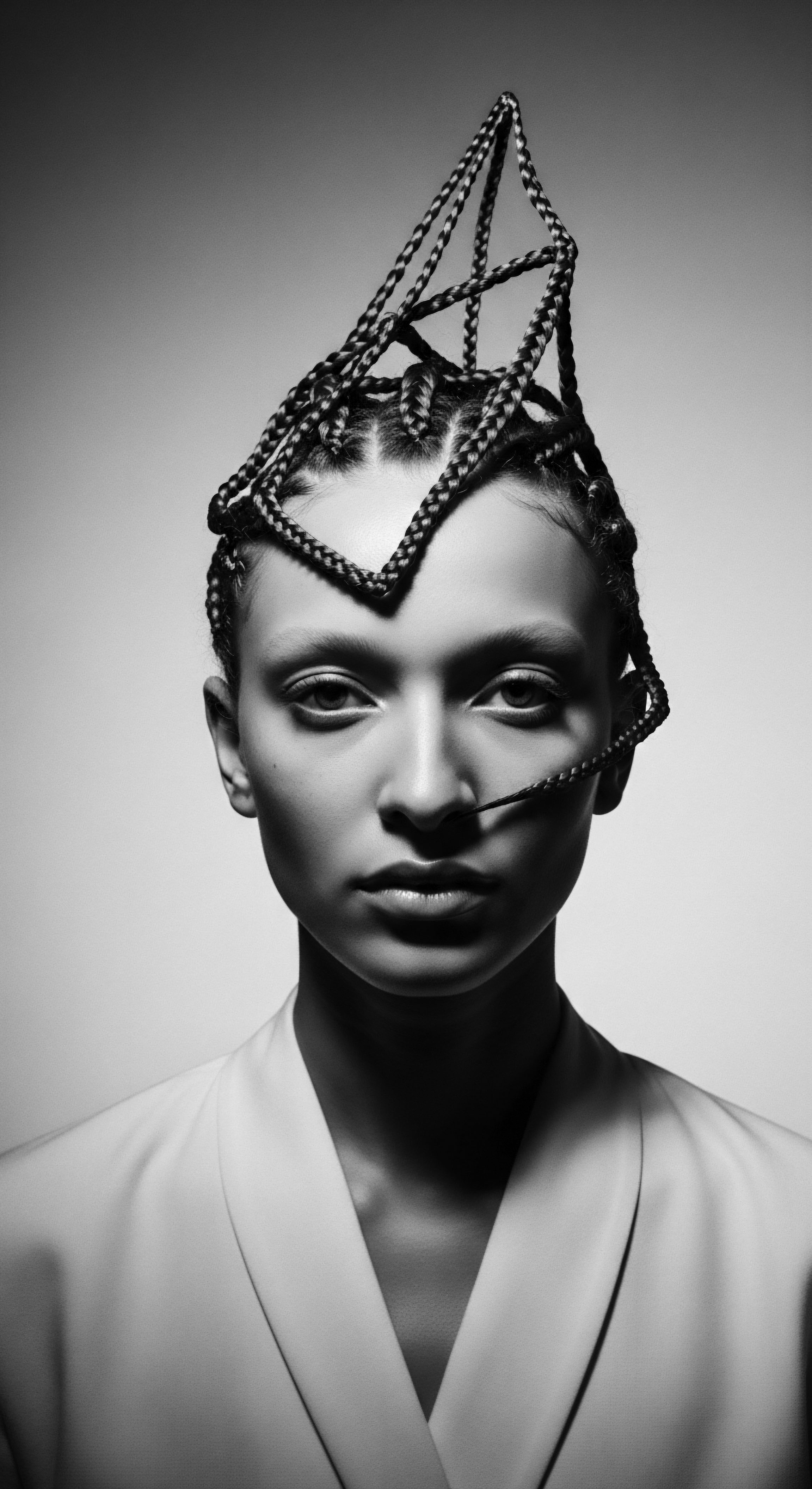
Fundamentals
The intricate world of hair, particularly the rich landscape of textured strands, holds within its very structure an enduring testament to life’s persistent renewal. At its elemental core, the concept of Hair Follicle Regeneration stands as a biological marvel. It represents the physiological process by which a hair follicle, that small yet profound organ nestled within the skin, concludes one cycle of growth and shedding, only to initiate a subsequent cycle, giving rise to a new hair shaft. This process, a continuous dance of cellular creation and renewal, ensures the ongoing presence of hair upon the scalp, a visible marker of vitality.
For generations, across diverse cultures, the cyclical nature of hair has been observed and revered, long before scientific microscopes unveiled the cellular mechanisms. Ancestral communities, particularly those with deep connections to the earth and its rhythms, recognized the inherent capacity of hair to return, to replenish itself. They understood, with an intuitive wisdom, that hair was not merely an adornment but a living extension of self, capable of growth, shedding, and a return to fullness. This primal understanding forms the very bedrock of our contemporary discussions, grounding them in the lived experiences of those who tended to their hair with reverence.
The hair follicle, a tiny yet dynamic miniature organ, orchestrates this remarkable cycle. Its journey comprises distinct phases ❉ a period of active growth known as Anagen, a transitional phase called Catagen, and a resting phase, Telogen, culminating in the shedding of the old hair and the subsequent emergence of a new one. This fundamental rhythm, though universal in its biological blueprint, manifests uniquely across the spectrum of hair textures. For textured hair, particularly those with tighter curls and coils, the spiraling journey of the hair shaft from its follicular home presents its own set of considerations, influencing how external factors and care practices interact with this natural regeneration.
A hair follicle’s intrinsic ability to regenerate is a biological wonder, mirroring the ancient wisdom that perceived hair as a living, cyclical extension of the self.
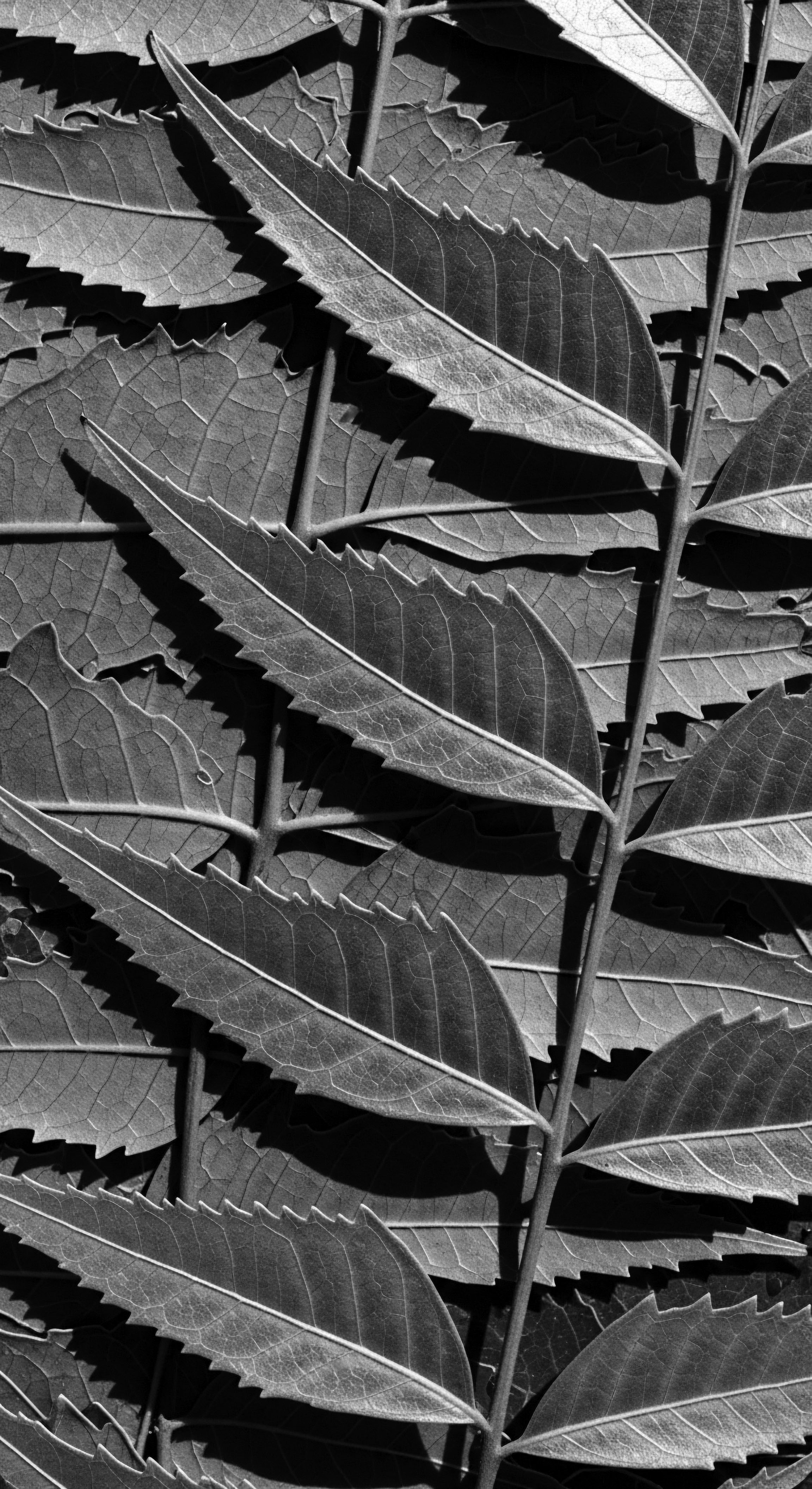
The Hair’s Lifeline
Within the scalp’s embrace, each hair follicle operates as a self-contained factory, meticulously crafting strands of hair. Its primary task centers on the continuous production of these fibers, a process that relies on a specialized collection of cells residing at its base. The hair follicle, therefore, represents not simply a conduit for hair but the very engine behind its creation and sustained presence. Understanding its fundamental operations opens pathways to deeper appreciation for the hair that crowns us.
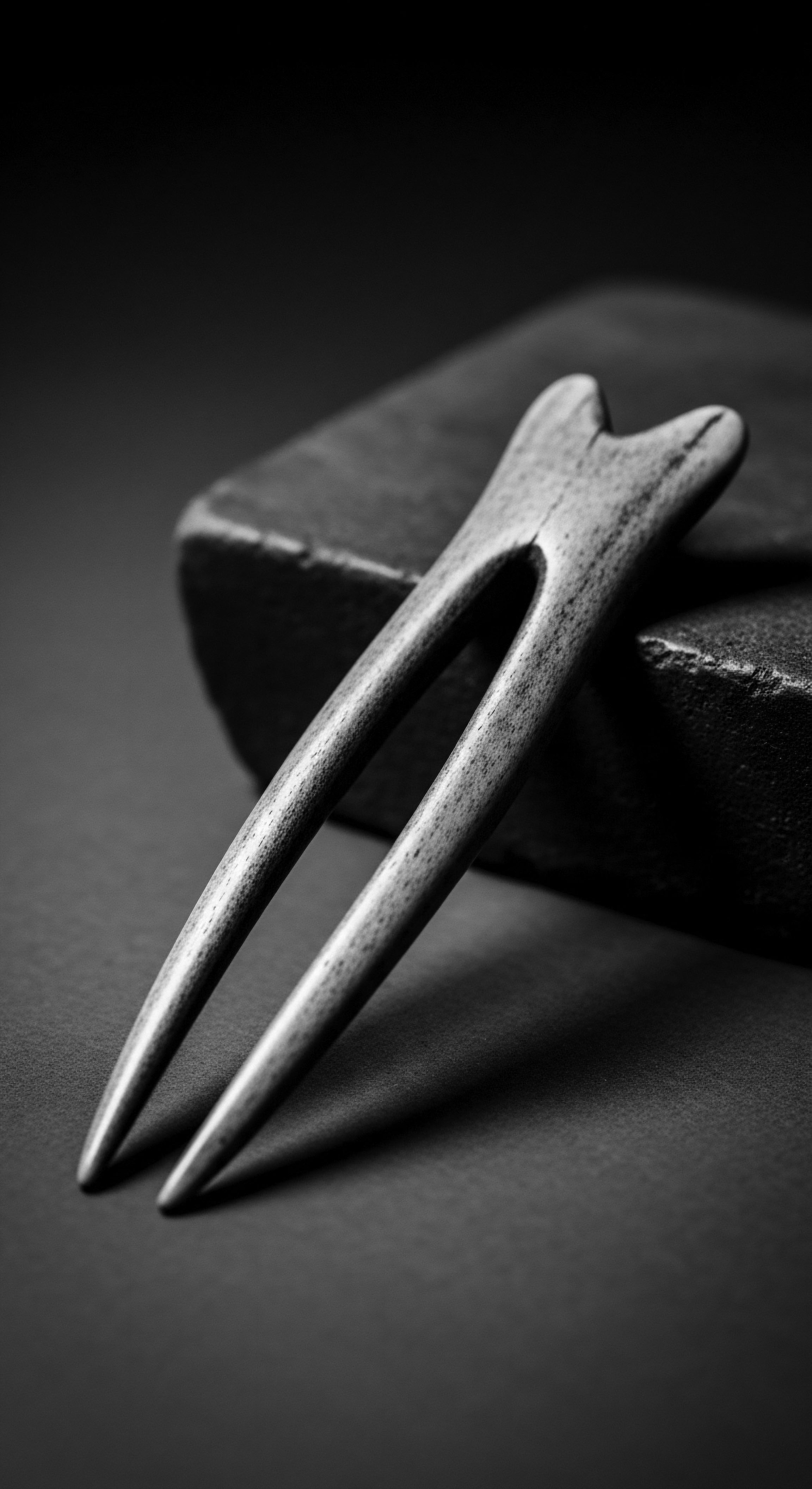
Echoes of Growth
The growth cycle is an ancient rhythm, one that has governed human hair for millennia. This cycle, an inherent part of our being, dictates the length and density of our hair over a lifetime. It is a biological testament to resilience, ensuring that even as old strands complete their journey, new ones are prepared to rise. Traditional hair care practices, passed down through generations, often worked in unspoken concert with these natural rhythms, aiming to support the hair’s inherent capacity for growth and renewal.
- Anagen Phase ❉ This active growth period, varying from a few years to several years, witnesses the follicle tirelessly producing hair. For many with textured hair, supporting this phase often involved consistent moisture and gentle handling to minimize breakage.
- Catagen Phase ❉ A brief, transitional stage, this period signals the end of active growth, as the follicle prepares for a dormant state.
- Telogen Phase ❉ The resting phase, during which the hair is fully formed but remains in the follicle, awaiting its eventual release. This phase’s duration varies among individuals and hair types.
- Exogen Phase ❉ The act of shedding, the release of the old hair, making way for the subsequent growth. This is a natural, necessary component of regeneration, often facilitated by gentle manipulation in traditional practices.

Intermediate
Moving beyond the foundational understanding, the concept of Hair Follicle Regeneration reveals itself as a more intricate biological dialogue, involving specific cellular components and signaling pathways that guide the hair’s cyclical rebirth. This deeper comprehension of its internal workings allows us to connect contemporary scientific discoveries with the timeless wisdom of ancestral care. The follicle is not a static structure; it is a dynamic entity, capable of profound self-organization and renewal, a remarkable feat within the human body.
At the heart of Hair Follicle Regeneration resides the Dermal Papilla, a small cluster of specialized mesenchymal cells situated at the base of the hair follicle. This dermal papilla acts as the key orchestrator, sending crucial signals that stimulate the overlying epithelial stem cells within the Hair Bulge Region. These stem cells, upon receiving the cues, then embark on a journey of proliferation and differentiation, ultimately forming a new hair shaft.
This cellular ballet, repeated over and over, underpins the follicle’s ability to regenerate a complete hair structure, again and again. This intricate dance explains why some hair types, like the tightly coiled strands prevalent in Black and mixed-race heritages, possess such remarkable resilience and unique growth patterns.
The regeneration of hair follicles, guided by cellular signals from the dermal papilla, forms a bridge between modern scientific discovery and the enduring wisdom of traditional hair care practices.
Ancestral hair care traditions, though lacking the precise scientific nomenclature of today, implicitly understood and supported these regenerative processes. Their practices, honed over centuries through observation and collective experience, aimed to foster a healthy environment for the scalp and hair, recognizing the vital connection between robust roots and vibrant strands. They cultivated practices that minimized stress on the follicle, maintained moisture, and provided topical nutrition, all of which contribute to an environment conducive to healthy regeneration cycles. The deep traditional insight into the care of hair, especially textured hair, often provided a supportive milieu for the very regenerative processes science now describes.
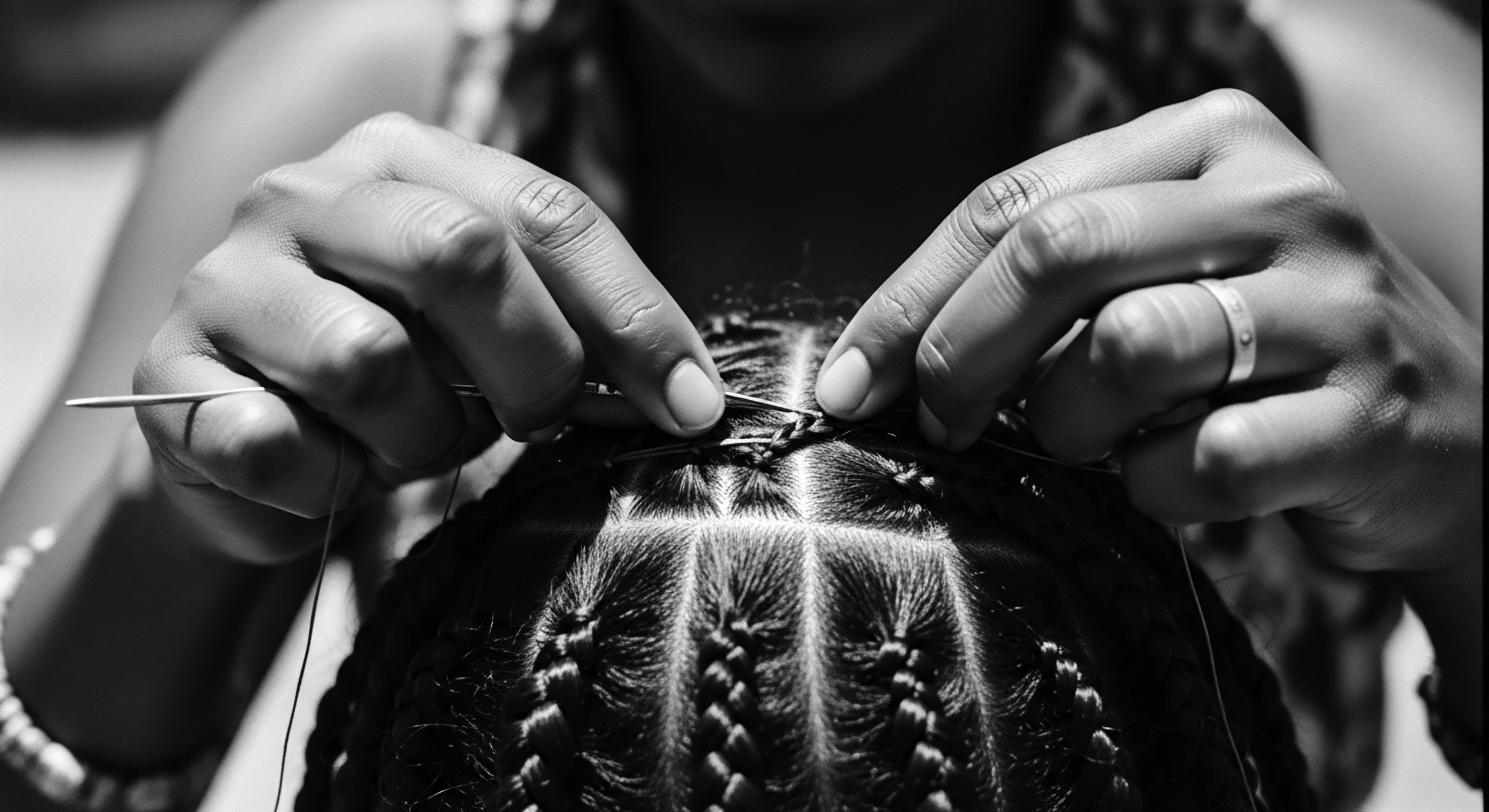
The Cellular Whispers
The conversation between cells within the hair follicle is a continuous symphony, one that dictates the rhythm of hair growth and the regeneration of new strands. This cellular communication is vital for maintaining the hair cycle. When we speak of regeneration, we are speaking of these precise, orchestrated exchanges that enable the follicle to consistently produce new hair.
- Dermal Papilla Cells ❉ These specialized cells, nestled at the base of the follicle, serve as the primary conductors of the regeneration orchestra. They send chemical signals that awaken dormant stem cells.
- Hair Bulge Stem Cells ❉ Located in the hair bulge, these multipotent stem cells respond to the dermal papilla’s prompts, initiating the construction of a new hair shaft. Their existence represents a built-in reservoir of regenerative potential.
- Signaling Pathways ❉ Complex biochemical pathways, including Wnt and BMP signaling, mediate the communication between the dermal papilla and stem cells. These pathways direct cell proliferation, differentiation, and the precise timing of the hair cycle.
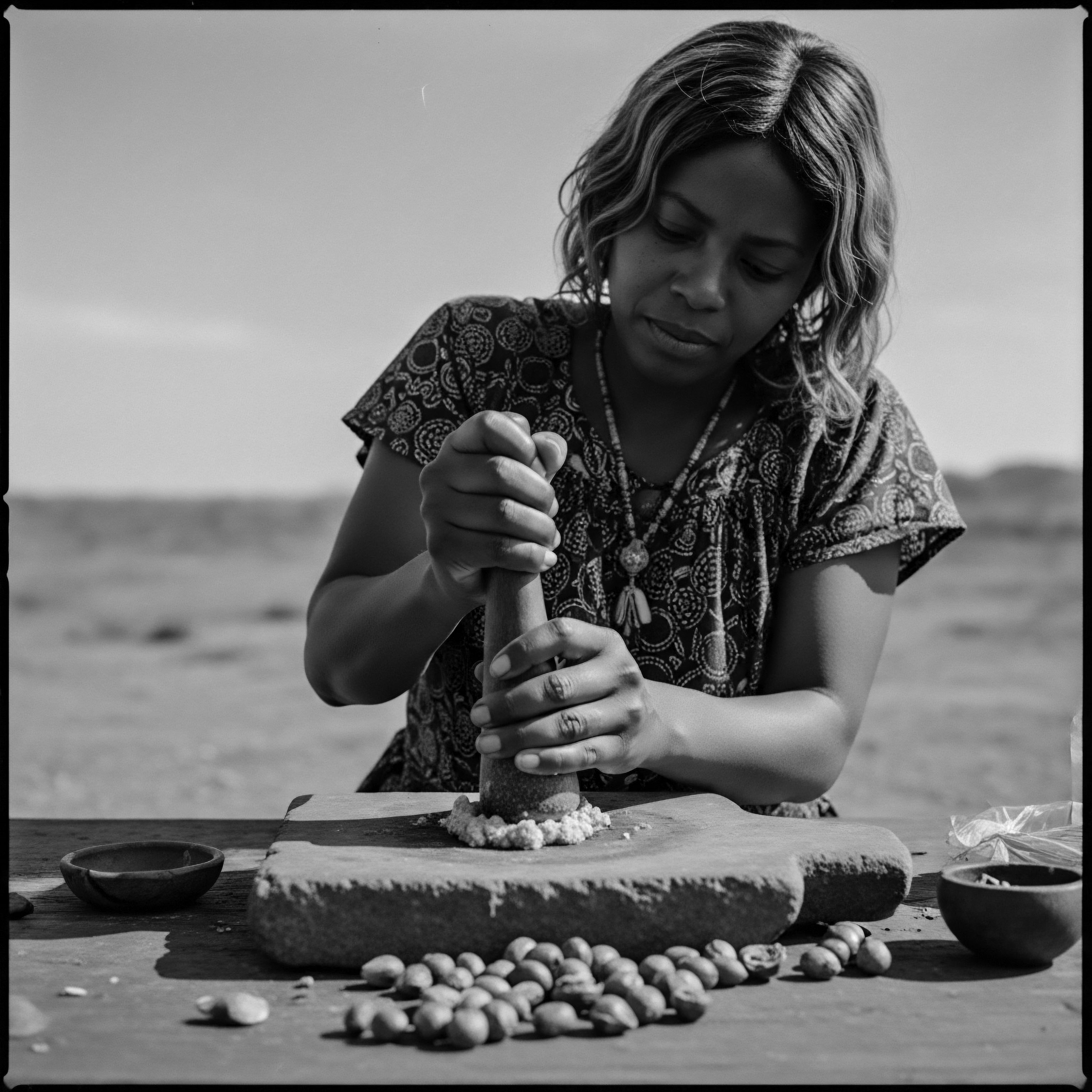
Ancestral Alchemy
Long before laboratories isolated growth factors or charted cellular pathways, ancestral communities understood the fundamental needs of hair. Their care practices, developed over generations, were a testament to practical wisdom and an intuitive understanding of the hair follicle’s well-being. These rituals, often communal and deeply spiritual, inadvertently created optimal conditions for hair health and regeneration.

The Tender Touch of History ❉ Traditional Ingredients and Methods
The practices of ancient communities often involved natural ingredients, deeply connected to their local environments, to nourish and protect hair. These methods, passed down through oral tradition and lived experience, represent a profound heritage of hair care that implicitly supported hair follicle health. For instance, the use of various plant oils, butters, and herbs served to moisturize the scalp and strands, reduce breakage, and promote a healthy environment for growth. Many of these traditional ingredients possess properties that modern science now validates as beneficial for cellular health and regeneration.
Consider the use of Manketti oil, also known as Mongongo oil, by the San communities of the Kalahari Desert. For centuries, this oil, extracted from the kernels of the manketti tree, has been a staple in their hair care. Rich in vitamin E and eleostearic acid, it forms a protective film over the hair when exposed to sunlight, moisturizing and conditioning it.
This traditional application safeguarded hair from harsh environmental elements, minimizing damage and breakage, thus supporting the natural hair growth cycles by preserving the integrity of the hair shaft and scalp. Such practices, born of necessity and wisdom, implicitly contributed to the longevity and healthy regeneration of hair follicles.
Another example, often overlooked in mainstream narratives, comes from the Igbo women of Nigeria. The Isi Owu technique, a practice of African threading, has been used for hundreds of years to help children’s hair grow. This traditional style involves wrapping sections of hair with black thread, which serves to stretch and protect the hair, promoting its health and growth. (Ozi Ikòrò, 2024; The History and Symbolism of Hair Wrapping Across the African Diaspora, 2025).
This method, often worn by young unmarried girls, not only had aesthetic and social significance but also directly contributed to the preservation of hair length and minimized breakage, thereby supporting the underlying hair follicle’s ability to continue its regenerative cycles unimpeded. The practice highlights a deep, intergenerational understanding of textured hair’s specific needs, using protective styling to sustain its vitality.
The convergence of these historical practices with modern scientific understanding offers a powerful testament to the continuity of knowledge. The gentle care, the scalp massages, the application of nourishing natural compounds—all these elements, steeped in heritage, created conditions that fostered hair growth and resilience, conditions we now understand to be conducive to optimal Hair Follicle Regeneration.
| Traditional Element Natural Oils and Butters (e.g. Shea Butter, Coconut Oil, Manketti Oil) |
| Ancestral Practice Applied to moisturize scalp and hair, protect from sun and elements, reduce friction. |
| Contemporary Link to Regeneration Maintain scalp health, reduce inflammation, provide lipids for barrier function, minimize breakage, supporting consistent follicle cycling. |
| Traditional Element Herbal Infusions/Washes (e.g. Rice Water, Ziziphus spina-christi) |
| Ancestral Practice Used for cleansing, conditioning, and scalp health; believed to promote hair growth. |
| Contemporary Link to Regeneration Deliver topical nutrients, anti-inflammatory compounds, and antioxidants, creating a healthy environment for follicle activity. |
| Traditional Element Protective Hairstyles (e.g. Braids, Threading, Locs, Isi Owu) |
| Ancestral Practice Shield hair from environmental damage, reduce manipulation, signify status or age. |
| Contemporary Link to Regeneration Minimize tension and breakage on hair shafts and follicles, allowing for longer anagen phases and undisturbed regeneration. |
| Traditional Element Scalp Massage |
| Ancestral Practice Integrated into grooming rituals, often with oils, to stimulate blood flow and relax the individual. |
| Contemporary Link to Regeneration Improves microcirculation to the hair follicles, enhancing nutrient and oxygen delivery necessary for robust cellular activity and regeneration. |
| Traditional Element These traditional approaches, rooted in centuries of observation, instinctively supported the conditions necessary for optimal hair health and its natural regeneration. |
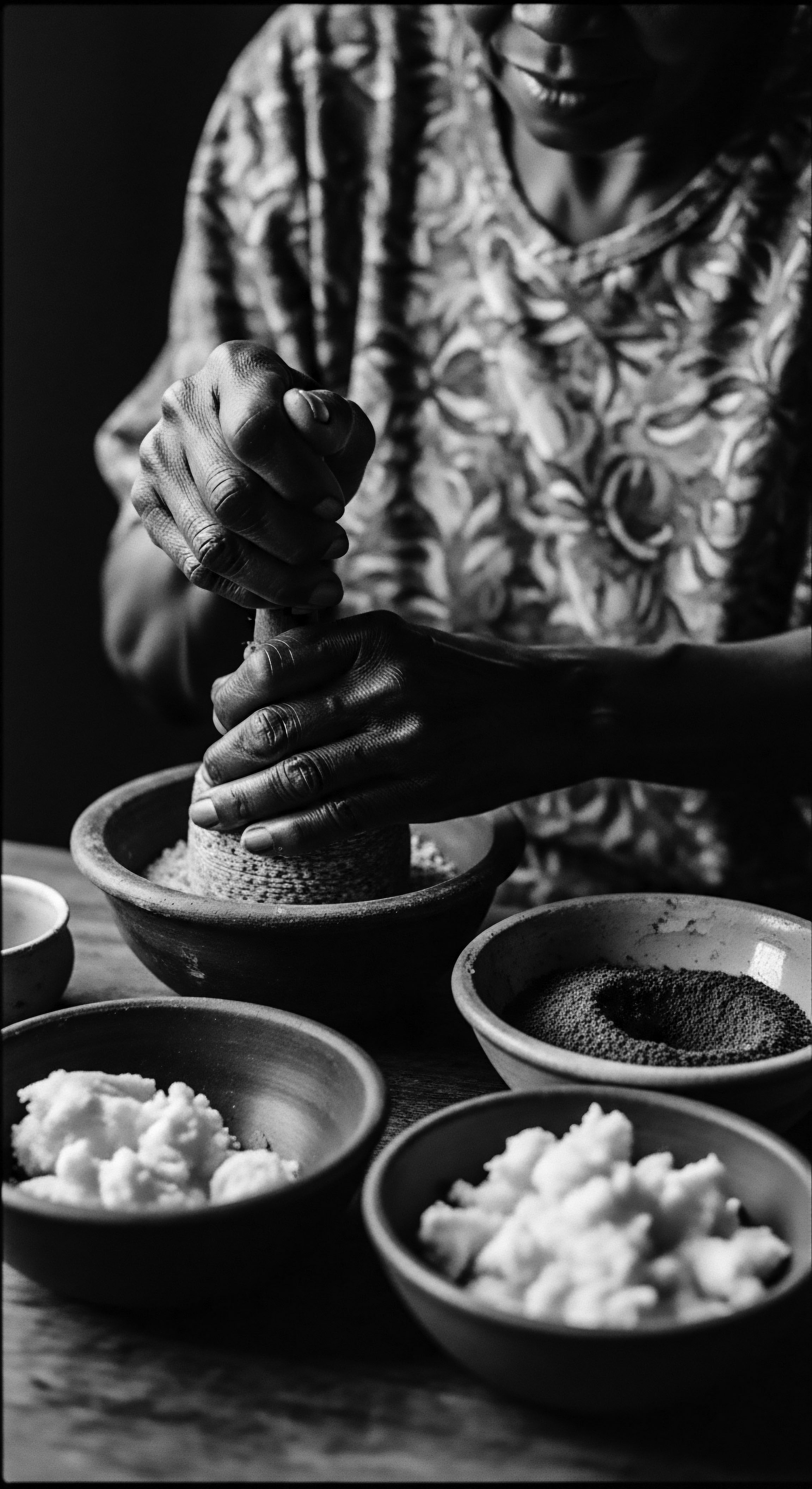
Academic
From an academic vantage, Hair Follicle Regeneration represents a profound phenomenon in tissue biology, a distinctive example of recurrent organogenesis in mature mammals. This precise biological operation involves the intricate orchestration of epithelial-mesenchymal interactions, cellular signaling pathways, and stem cell dynamics within the hair follicle niche. Its continued study not only illuminates the mechanisms of hair growth but also offers invaluable insights into broader regenerative medicine.
The Hair Follicle, a complex mini-organ, cycles through defined phases of growth (anagen), regression (catagen), and rest (telogen). Regeneration, in this context, signifies the follicle’s intrinsic ability to reconstitute its entire structure, including the hair shaft, after each period of shedding. This cyclical renewal is primarily driven by the reciprocal signaling between the Dermal Papilla (a specialized mesenchymal cell aggregate) and epithelial stem cells residing in the Bulge Region of the outer root sheath.
During the onset of a new anagen phase, dermal papilla cells activate quiescent hair follicle stem cells (HFSCs) through the precise secretion of growth factors and morphogens. Key signaling pathways, such as the Wnt/β-catenin pathway and the bone morphogenetic protein (BMP) pathway, play pivotal roles in this induction. Wnt signaling, for instance, promotes the proliferation and differentiation of HFSCs, driving the downward migration of the follicular epithelium to form a new hair bulb. Conversely, BMP signaling often functions antagonistically to Wnt, regulating the timing and cessation of growth.
The dynamic balance between these pathways dictates the duration of the anagen phase, consequently influencing hair length, density, and overall health. A functional population of dermal papilla cells, along with the regenerative capacity of bulge stem cells, remains indispensable for sustained Hair Follicle Regeneration over a lifetime.

The Biological Tapestry of Renewal
The molecular and cellular ballet underpinning Hair Follicle Regeneration presents a sophisticated biological system. Understanding its inner workings demands a close examination of the interplay between various cell populations and their precise chemical dialogues. This cyclical process, unique among adult organs, offers compelling avenues for deeper scientific inquiry into tissue repair and regrowth.
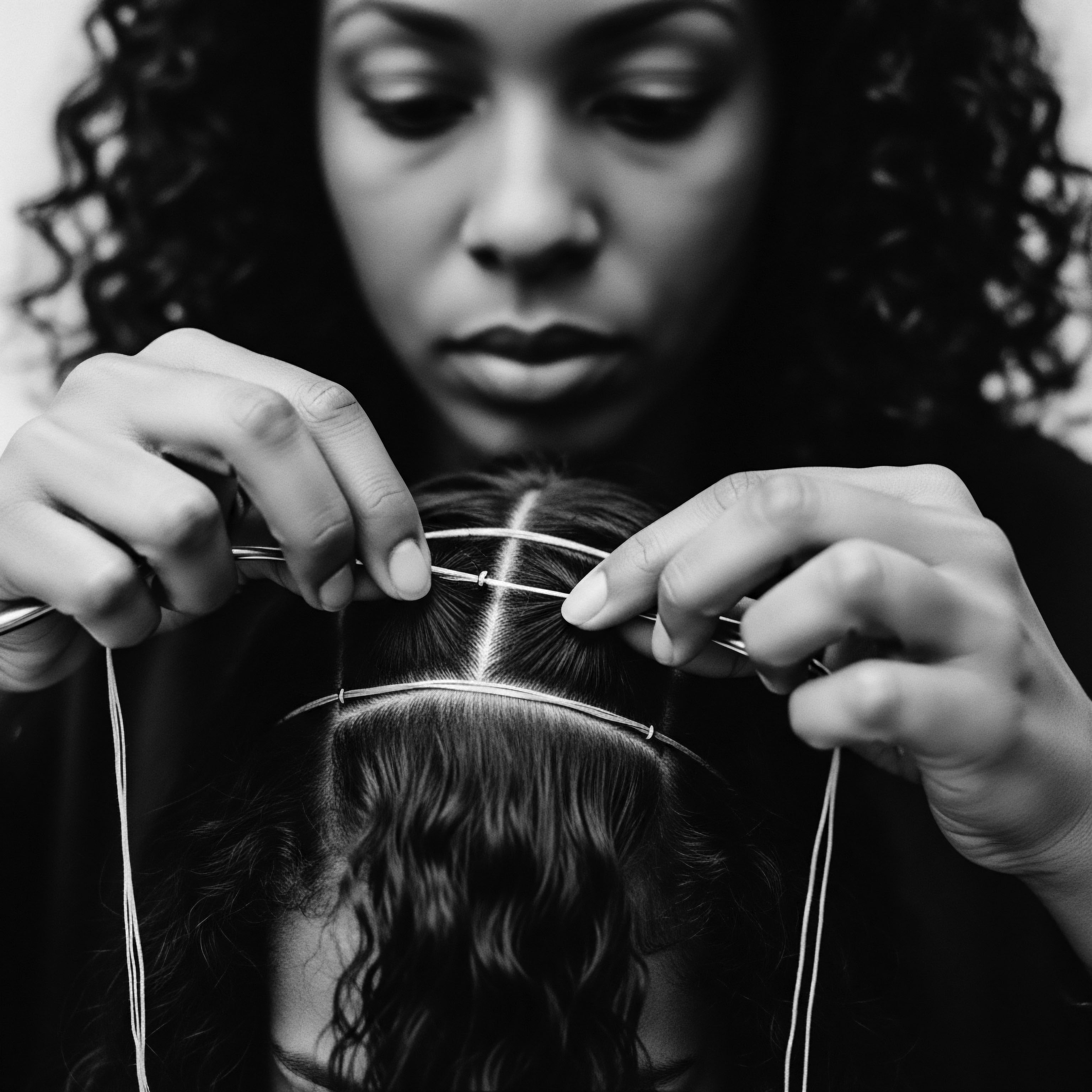
Micro-Anatomy of Regeneration
- Dermal Papilla (DP) ❉ This mesenchymal component is the primary signaling center. It is a unique structure capable of inducing new hair follicle formation. The viability and health of DP cells are paramount for initiating and sustaining hair growth cycles.
- Hair Follicle Stem Cells (HFSCs) ❉ Located in the hair bulge, these adult stem cells serve as the reservoir for follicular regeneration. Upon activation, they proliferate and give rise to various cell lineages that constitute the new hair follicle and shaft.
- Outer Root Sheath (ORS) ❉ This epidermal layer of the hair follicle provides a protective barrier and contains cell populations that contribute to the integrity and regeneration of the follicle.
- Inner Root Sheath (IRS) ❉ This transient structure guides the growing hair shaft and is continuously regenerated from the matrix cells of the hair bulb.
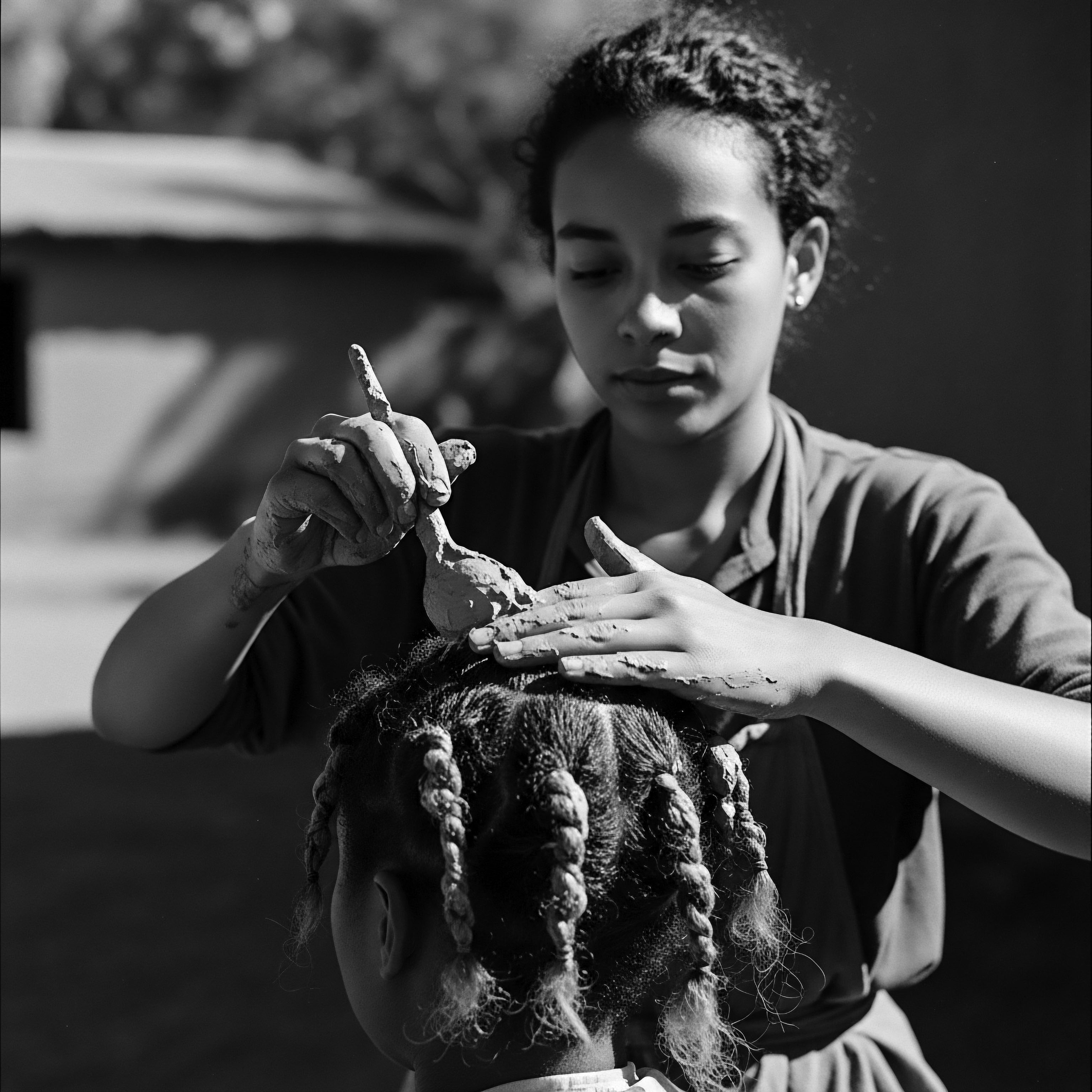
Signaling and Cellular Crossroads
The communication network that directs Hair Follicle Regeneration involves a complex symphony of biochemical signals. The Wnt/β-catenin pathway, when activated, plays a crucial role in promoting hair follicle development and the initiation of the anagen phase. Conversely, the BMP signaling pathway acts as a negative regulator, influencing the transition from anagen to catagen and maintaining the telogen phase. Other factors, such as the Hedgehog pathway, Notch signaling, and various growth factors including epidermal growth factor (EGF), insulin-like growth factor 1 (IGF-1), and vascular endothelial growth factor (VEGF), contribute to this intricate regulatory network, ensuring precise control over the timing and characteristics of each regenerative cycle.

Hair’s Enduring Legacy ❉ A Historical Recitation of Resistance and Regeneration
The discourse surrounding Hair Follicle Regeneration, when viewed through the specific lens of Black and mixed-race hair experiences, transcends mere biology. It becomes a testament to resilience, identity, and the profound impact of historical imposition on personal well-being. The inherent capacity of hair to grow and regenerate has been both celebrated and, tragically, weaponized within systems of oppression.
During the transatlantic slave trade, the forced shaving of hair served as a brutal act of dehumanization, a deliberate erasure of African identity and cultural heritage. Hair, prior to this period, functioned as a powerful marker of social status, tribal affiliation, marital standing, and spiritual connection across many African societies. The systematic removal of this bodily expression of identity was a direct assault on the self, designed to sever ancestral ties and impose a new, diminished status. This historical trauma left an indelible mark on the collective consciousness regarding Black hair.
Following enslavement, the imposition of Eurocentric beauty standards led to a complex and often painful relationship with textured hair. The concept of “good hair” became synonymous with straight hair, perpetuating a hierarchy that devalued naturally coily and curly textures. This societal pressure spurred the widespread adoption of chemical straighteners, or “relaxers,” and heat styling, practices that, while offering a semblance of conformity, frequently led to significant hair damage, breakage, and scalp conditions. The pursuit of an imposed aesthetic often compromised the very integrity of the hair follicle, interrupting its natural regenerative cycles and leading to conditions like Central Centrifugal Cicatricial Alopecia (CCCA), which disproportionately affects Black women.
For Black and mixed-race communities, the narrative of hair follicle regeneration is inextricably tied to a legacy of cultural resilience and reclamation, challenging imposed standards to celebrate natural vitality.
The modern natural hair movement, which gained considerable momentum in the 2000s, represents a powerful act of reclaiming anatomical autonomy and cultural pride. This movement encourages individuals to forgo chemical treatments, embrace their inherent hair texture, and prioritize hair health. This shift directly supports the intrinsic process of Hair Follicle Regeneration, allowing follicles to thrive in their natural state, free from the damaging effects of harsh chemicals and excessive heat. It is a profound return to honoring the body’s natural capacity for renewal, deeply rooted in ancestral wisdom that understood the hair’s sacred nature.
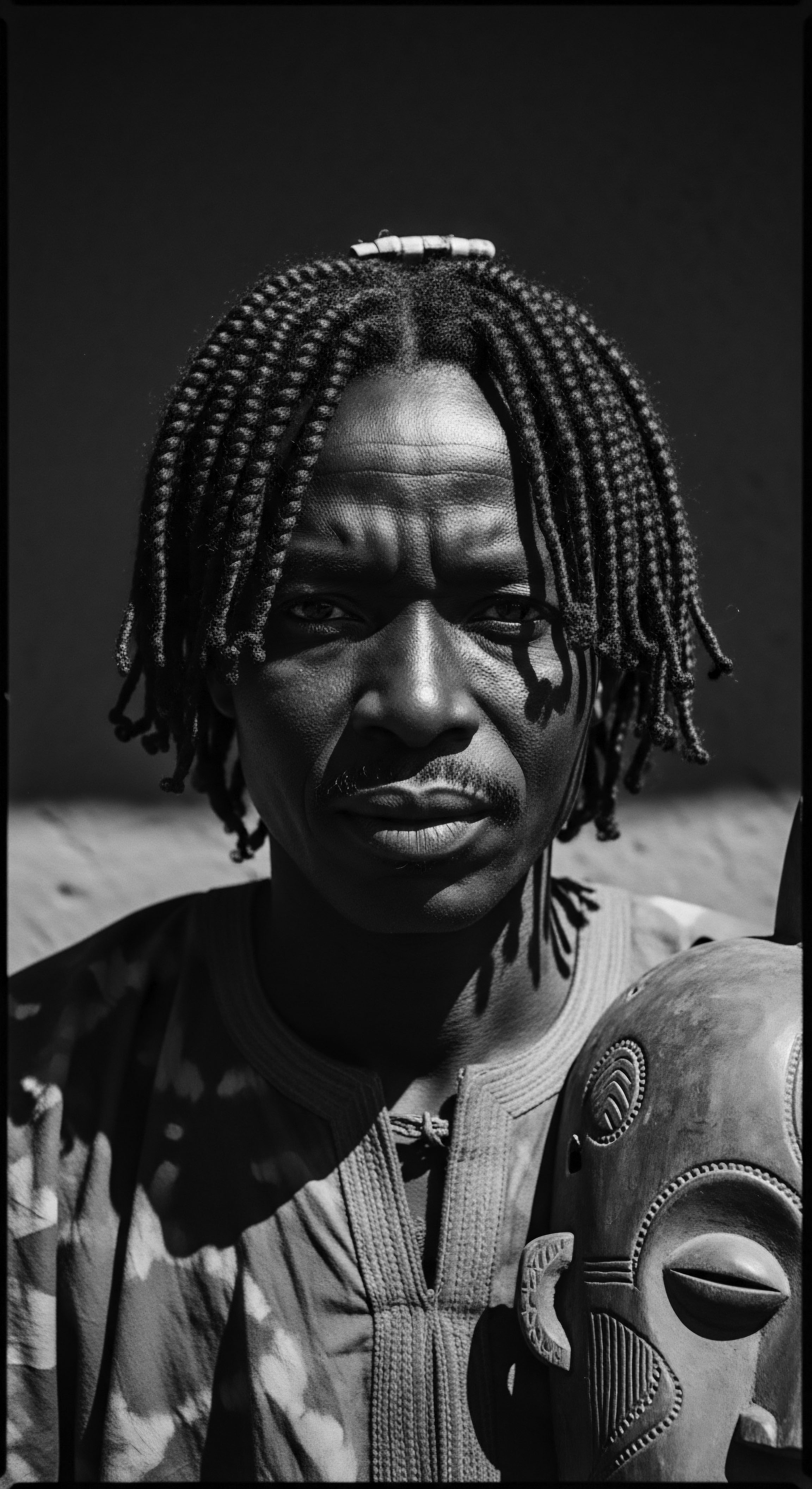
A Personal Recounting ❉ Loretta J. Ross and the Afro
The journey from chemically altered hair to the unapologetic embrace of natural texture holds deep personal significance for many, encapsulating a profound shift in identity and well-being. Loretta J. Ross, a prominent Black feminist and human rights activist, offers a compelling personal narrative that powerfully illustrates this historical and cultural evolution. Ross recounts the painful experience of having her hair pressed as a child, a common practice aimed at straightening tightly coiled hair to conform to societal norms.
“My mother would try to press my hair,” Ross shared in an oral history, describing how the hot comb often burned her scalp, leaving scabs. This visceral memory speaks to the physical discomfort and the underlying pressure to alter natural hair.
However, a turning point arrived for Ross in her teenage years with the advent of the Afro. She stated, “when I was 14 years old, maybe 14 or 15 years old and I discovered the Afro, I was through with pressing hair. Never pressed my hair since.” This personal act of liberation, repeated by countless others during the Civil Rights Movement, was more than a mere style change; it was a defiant embrace of inherent beauty and a rejection of oppressive standards.
The Afro became a symbol of Black pride and resistance. Later, in 1980, Ross further committed to natural hair by growing dreadlocks, marking a sustained dedication to authentic self-expression.
Ross’s story exemplifies the broader cultural shift ❉ the move away from practices that compromised hair health and impeded natural regeneration, towards methods that allowed the hair follicle to function optimally. By abandoning pressing, she allowed her hair follicles to exist in a state conducive to natural growth, free from thermal damage and chemical stress. This act, on a personal level, mirrored the collective societal awakening to the beauty and strength of natural Black hair, implicitly affirming the Hair Follicle Regeneration process as a foundation of hair vitality. It underscores how personal choices about hair are deeply intertwined with historical narratives, cultural politics, and ultimately, the biological well-being of the hair itself.
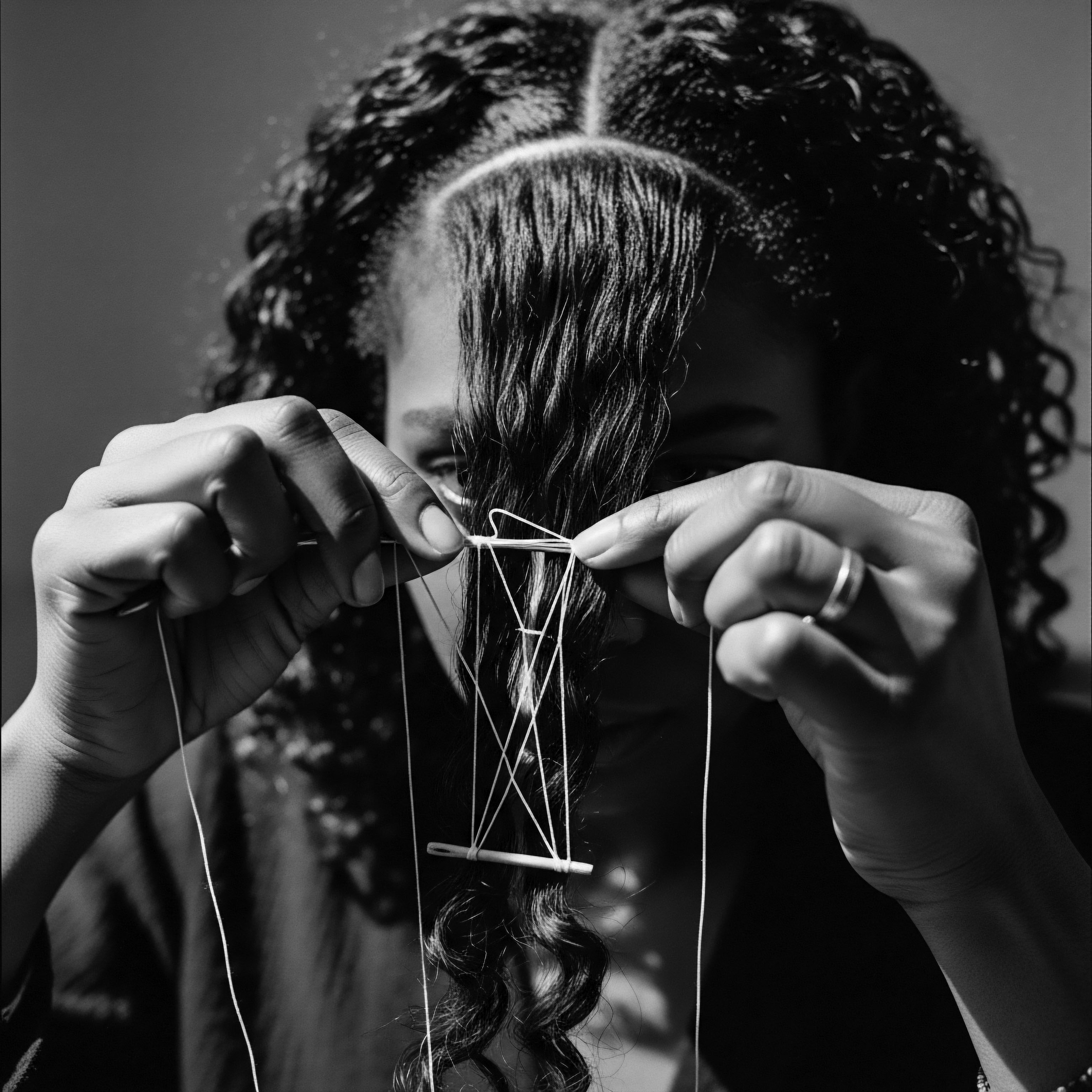
The Science of Ancestral Reverence
The intersection of contemporary scientific understanding with ancestral wisdom provides a richer, more comprehensive perspective on Hair Follicle Regeneration. Modern research often uncovers the scientific rationale behind practices that have been revered for centuries, revealing a continuity of knowledge across time.

Ethnobotanical Insights into Hair Growth
Ethnobotanical studies, which document the traditional uses of plants by indigenous cultures, offer compelling evidence for the efficacy of ancestral practices in promoting hair health and, by extension, supporting Hair Follicle Regeneration. A review of African plants used for hair treatment revealed 68 species, many of which target conditions such as alopecia and scalp infections. Of these, 30 species have research associated with hair growth and general hair care, with studies investigating mechanisms like 5α-reductase inhibition (a common target in hair loss treatments) and effects on the rate of telogen to anagen phase transition.
This indicates that traditional knowledge, accumulated through generations of observation and application, often aligns with modern scientific understanding of how to support hair growth. Plants like Cocos nucifera (coconut), Elaeis guineensis (palm), and various Allium species (onion, garlic) have been traditionally used for general hair care or baldness in African communities, and some possess properties that may support a healthy follicular environment. For example, coconut oil has been shown to treat brittle hair and infestations, though evidence for direct growth stimulation is limited. These examples highlight a sophisticated understanding within ancestral practices of supporting hair health through natural means, which, while not explicitly defined as “follicle regeneration” at the time, certainly contributed to it.
The emphasis on scalp health in many traditional African hair care routines, often involving cleansing herbs and nourishing oils, directly supports the delicate environment of the hair follicle. A healthy scalp, free from inflammation and blockages, provides the optimal conditions for the dermal papilla and stem cells to function effectively, ensuring consistent Hair Follicle Regeneration cycles. This validates the deep reverence for natural ingredients and holistic care that characterizes Black and mixed-race hair heritage.
- Hydration and Moisture Retention ❉ Ancestral practices consistently prioritized infusing and sealing moisture into textured hair, understanding its propensity for dryness. This approach, often achieved with natural butters and oils, directly prevented breakage and damage to the hair shaft, reducing stress on the follicle and promoting its undisturbed regeneration.
- Scalp Health as Foundation ❉ Many traditional rituals centered on maintaining a clean, nourished scalp using plant-based washes and invigorating massages. A healthy scalp environment is fundamental for optimal hair follicle function, supporting blood circulation and nutrient delivery to the papilla cells.
- Protective Styling ❉ The use of intricate braiding, threading, and wrapping techniques, as seen in the Isi Owu practice of the Igbo people or the widespread use of headwraps, served to protect the hair from environmental stressors and minimize manipulation. These styles preserved hair length and reduced mechanical stress on the follicles, allowing them to remain in the active growth phase for longer periods.
- Community and Intergenerational Knowledge ❉ Hair care in many African and diasporic communities was, and remains, a communal activity, passed down from elders to younger generations. This collective knowledge ensured that effective practices for maintaining hair health, and by extension, supporting its natural regeneration, were preserved and adapted through time.
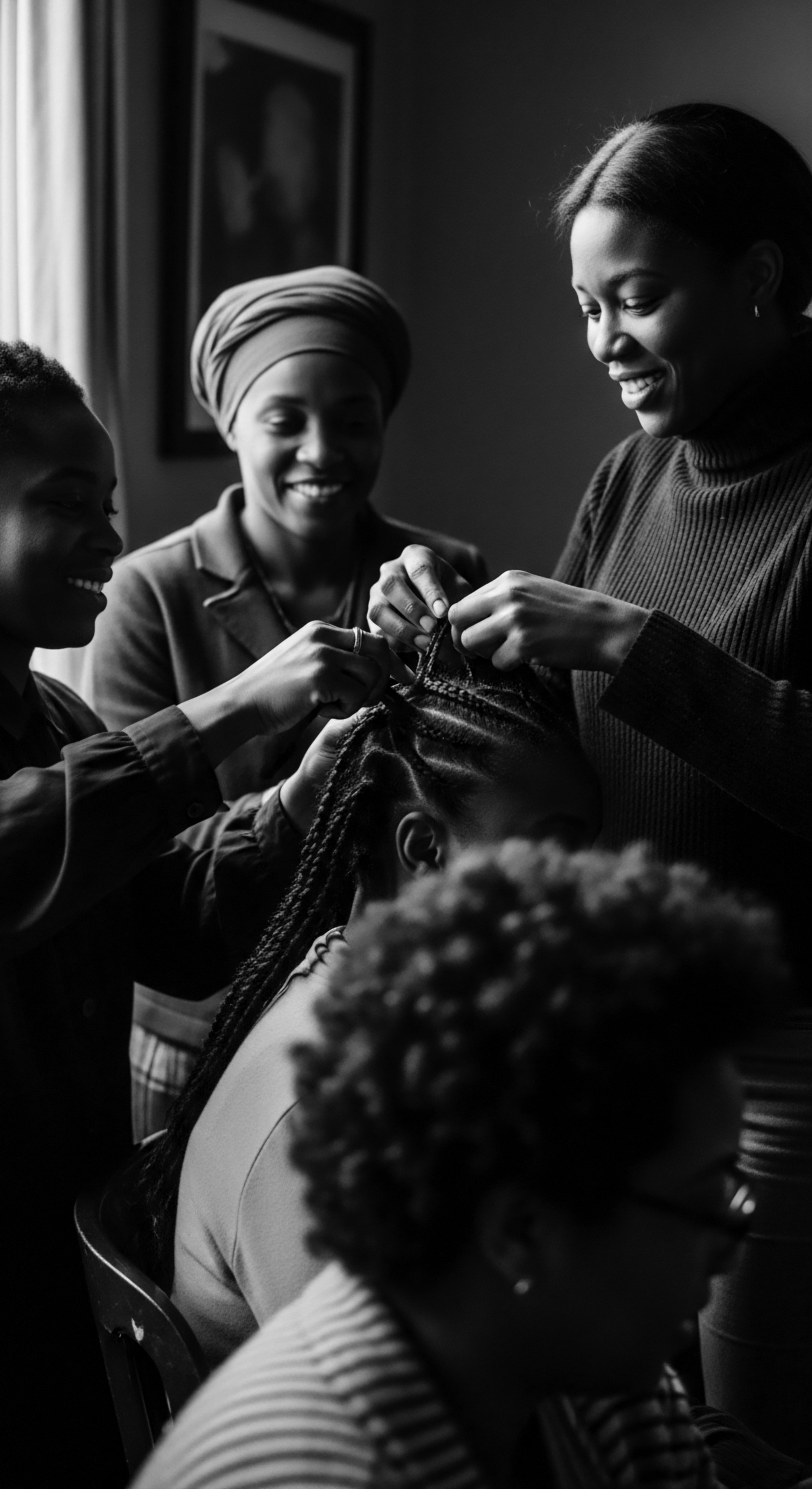
Reflection on the Heritage of Hair Follicle Regeneration
The journey into the Hair Follicle Regeneration, through the lens of textured hair heritage, ultimately transcends mere scientific explanation. It transforms into a profound meditation on identity, resilience, and the enduring wisdom carried within every strand. The biological process of hair regrowth is a universal phenomenon, yet its cultural interpretation and lived experience within Black and mixed-race communities are deeply unique, shaped by centuries of historical narrative and unwavering determination.
From the earliest ancestral acknowledgments of hair as a spiritual conduit and marker of belonging, to the brutal realities of enslavement that sought to strip away this sacred connection, and through the persistent fight for self-definition in the face of imposed beauty norms, hair has always been more than keratin. It has been a living archive, a visible manifestation of stories, struggles, and triumphs. The very act of a hair follicle regenerating, producing a new strand, echoes the regenerative spirit of communities that have continually found ways to flourish despite adversity.
Today, as scientific understanding of Hair Follicle Regeneration deepens, we find affirming echoes of ancient practices. The modern pursuit of scalp health, gentle care, and protective styling aligns remarkably with the timeless wisdom of those who understood the intimate connection between external care and internal vitality. This convergence allows us to appreciate the scientific intricacies of follicular renewal while simultaneously honoring the deep, inherited knowledge that has always recognized hair as a vibrant, living entity, deserving of reverence and mindful attention.
The renewed interest in natural hair care, a contemporary expression of ancestral wisdom, allows more follicles to cycle robustly, producing hair that stands as a bold declaration of heritage and self-acceptance. The “Soul of a Strand” truly resides in this unbroken lineage of care, resilience, and the boundless capacity for renewal.

References
- Asbeck, S. Riley-Prescott, C. Glaser, E. & Tosti, A. (2022). Afro-Ethnic Hairstyling Trends, Risks, and Recommendations. Cosmetics, 9(1), 17.
- Heaton, S. (2021). Heavy is the Head ❉ Evolution of African Hair in America from the 17th c. to the 20th c. Library of Congress.
- Mbilishaka, A. (2018). PsychoHairapy ❉ Using Hair as an Entry Point for Mental Health Services. (Various publications and presentations cited in related works).
- Mouchane, M. Taybi, H. Gouitaa, N. & Assem, N. (2023). Ethnobotanical Survey of Medicinal Plants used in the Treatment and Care of Hair in Karia ba Mohamed (Northern Morocco). Journal of Medicinal Plants and By-products, 13(1), 201-208.
- Ozi Ikòrò. (2024). List of Igbo Women Traditional Hairstyles, Its Beauty and Significance.
- Phong, C. Lee, V. Yale, K. Sung, C. & Mesinkovska, N. (2022). Coconut, Castor, and Argan Oil for Hair in Skin of Color Patients ❉ A Systematic Review. Journal of Drugs in Dermatology, 21(7), 751-757.
- Purba, P. & Kuncoro, E. A. (2025). Plants used for hair and skin health care by local communities of Afar, Northeastern Ethiopia. Ethnobotany Research and Applications, 29, 30.
- Ramot, Y. & Paus, R. (2022). Advances in hair growth. F1000Research, 11, F1000 Faculty Rev-68.
- Ross, L. J. (2005). Voices of Feminism Oral History Project. Sophia Smith Collection. (Interview recorded September 2005).
- Savanna Oils. (2024). Products. (Information on Mongongo Oil).
- SCOREline. (2024). The Evolution of Traditional Igbo Hairstyles Across the Eras.
- The History and Symbolism of Hair Wrapping Across the African Diaspora. (2025). Ari Party Hair.
- Wokoma, S. N. (2025). Hair Care Practices from the Diaspora ❉ A Look at Africa, America, and Europe.
- Zimba, J. Nduna, M. & Masamba, W. (2005). Three major tree nut oils of southern central Africa ❉ Their uses and future as commercial base oils. ResearchGate .
